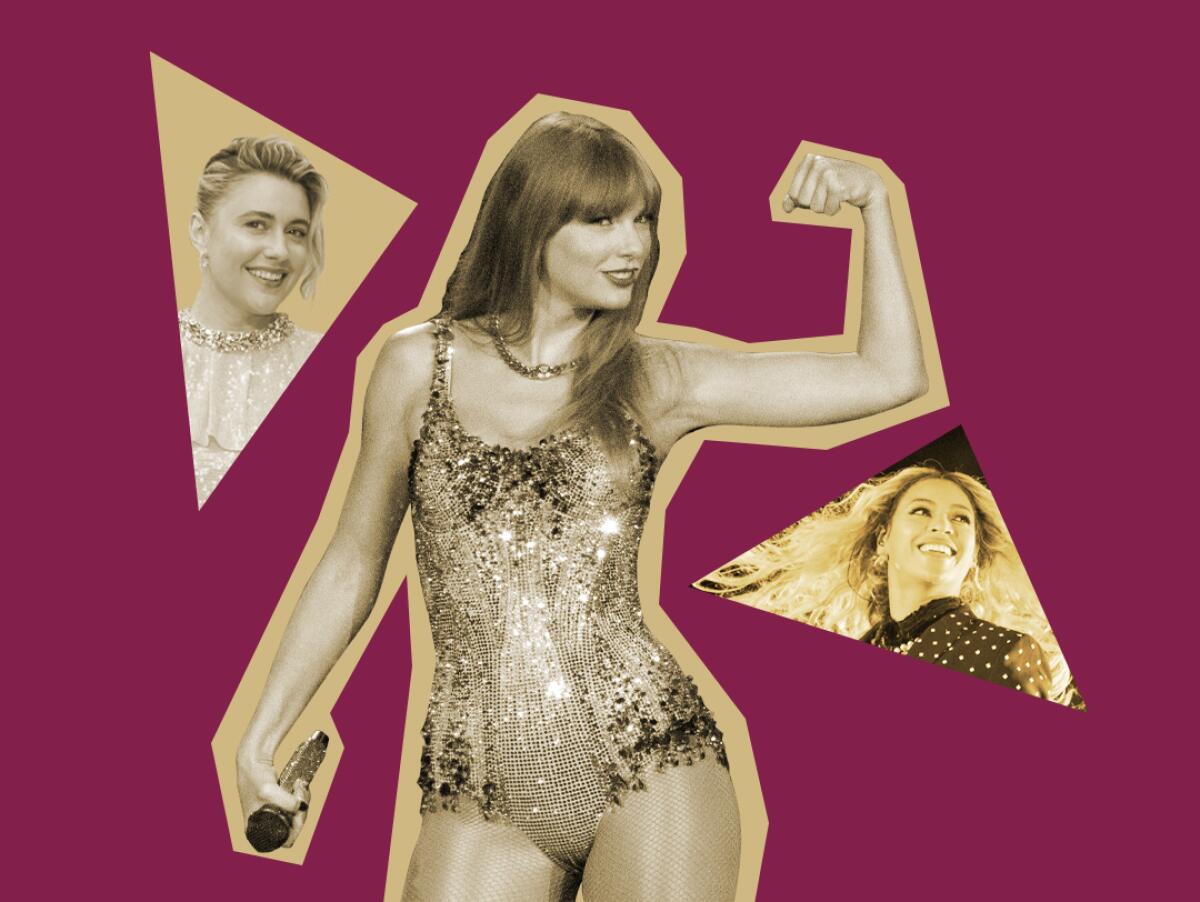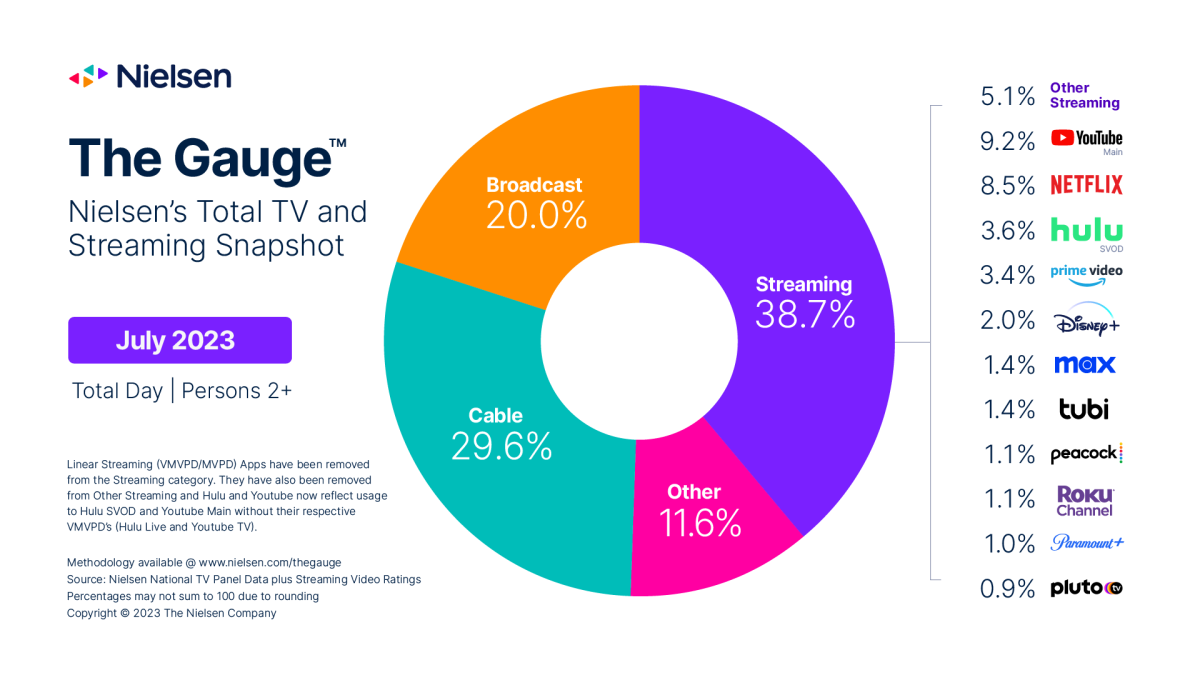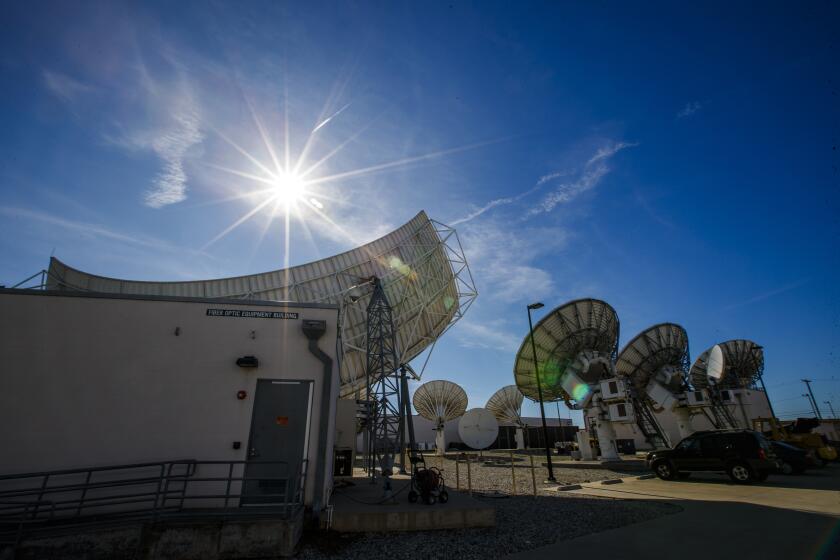From Taylor Swift’s Eras tour to ‘Barbie,’ women drive blockbusters. Will Hollywood notice?

Welcome to the Wide Shot, a newsletter about the business of entertainment. Sign up here to get it in your inbox.
Note to Hollywood: When you create a cultural event that appeals to multiple generations of women, you might get a billion-dollar blockbuster.
Greta Gerwig’s “Barbie” has grossed more than $1.18 billion at the global box office, turning movie theater auditoriums into seas of pink. Taylor Swift’s Eras tour, which last week concluded a run of six sold-out shows at Inglewood’s SoFi stadium, is projected to earn a staggering $1.3 billion. Beyoncé’s “Renaissance” tour is headed for a gross of more than $500 million in ticket sales, according to Billboard.
Each event is a phenomenon in its own right, owing to the quality of its creator’s work and vision.
But collectively, they also represent the pent-up demand among consumers whose buying power has always been a powerful economic driver but has clearly been waiting for something big to explode. It’s not often that the Federal Reserve Bank of Philadelphia touts the effect of a pop music tour on the local economy, the way it did for Eras.
Wall Street Journal reporters Sarah Krouse and Anne Steele partly ascribed the boom to what they called the “women’s multiplier effect.” That’s what happens when female consumers show up in groups for a film or concert, buying not just tickets but also clothing, dolls, drinks and hotel rooms for an all-out experience. It’s what gave “Barbie” screenings their party-like atmosphere, complete with themed cocktails and costumes.
“Women have always been a deeply underestimated economic force,” UTA’s Blair Kohan told the Journal.
The boost from group-buying is reflected in the ticketing numbers.
Thirty-eight percent of moviegoers for “Barbie” have gone in groups of three or more, according to data firm Movio, compared to 25% for the typical film. Nearly one in 10 (9%) have gone in groups of five or more, compared to 5% for other movies. There’s also a significant amount of repeat business, with 7% of moviegoers seeing it again. About 60% of the “Barbie” audience is female, Movio said.
And there’s a more specific demographic that has flexed its muscle at the movies and at packed stadium concerts: moms.
A crucial factor in the success of “Barbie” is that it appeals to mothers (represented in the film by America Ferrera’s character, Gloria) who grew up with the Mattel dolls and can now share that experience with the next generation, said Larry Vincent, a USC Marshall School of Business marketing professor who has worked with brands including Mattel.
“One of the things that we’re seeing here is a rite of passage,” Vincent said. “It’s making them feel good about that time in their lives.”
A similar cross-generational theme is playing out amid the Eras tour, with moms and dads taking their children to what, for many, is their first concert. Whole families are going together. Attendees are returning for multiple nights, which, given the ticket prices (which were going for upward of $1,000 on the resale market), reflects the tour’s astounding draw.
Swift made Eras the ultimate FOMO (fear of missing out)-inducing event, with a 3½-hour set list and a multisensory experience that lighted up TikTok for days on end. Not only is this Swift’s first tour since 2018 but it’s also the first one to come after the COVID-19 pandemic. She made it count for her fans, using it as a platform to announce the re-recording of her album “1989.”
“With both these two summer phenomenons, we have this really strong ritual dimension of consumer behavior at play here,” Vincent said.
“Part of the virality of ‘Barbie’ is that it’s tapped into this cultural thread that has multiple generations involved. And I think there’s a similar piece with Taylor Swift. Just look at the amount of commerce that’s happening with people booking hotels and buying the friendship bracelets. Those are pretty powerful forces in consumer behavior.”
As Swift turns young people into concertgoers, “Barbie” is bringing people back to the movies in the post-pandemic era.
About 1 in 5 ticket buyers for “Barbie” in the U.S. — 22% — hadn’t seen a film in theaters in the last six months, according to Movio. “Infrequent” moviegoers, or those who trek to the multiplex two times or fewer every six months, represented nearly half (46%) of attendees.
“We’re pulling people off the couch, and that’s what you see when you get box office grosses like that,” said Matthew Liebmann, chief innovation and data officer for Movio’s parent company, Vista Group, who also hosts the “Behind the Screens” podcast. “You have to get the people who don’t come that often.”
The movie industry ought to have absorbed the message by now, although the number of studios run by women remains a minority. To be sure, billion-dollar blockbusters are outliers, pretty much by definition. But it would be a mistake to witness a summer like this and shake it off as a fluke.
Strike watch
After more than 100 days of striking, the Writers Guild of America resumed negotiations with the Alliance of Motion Picture and Television Producers, which represents the major studios, on Friday afternoon.
The parties have agreed to meet again with the union’s full negotiating team, and the WGA is expected to respond to the studios’ counterproposal. The best sign that the negotiations are for real this time? The lack of bomb-throwing rhetoric immediately following last week’s meeting.
More strike coverage:
- SAG-AFTRA moves to rein in controversial side deals with independent producers
- Will reality TV stars unionize? SAG-AFTRA throws support behind Bethenny Frankel
- ‘We can’t pay our rent.’ Actors on the picket line reveal harsh reality of trying to make it in Hollywood
- Hollywood writers have been on strike for 100 days — and there’s no end in sight
- Column: This ‘hot labor summer’ is unifying Los Angeles in a way few could have imagined
More stuff we wrote
— Video game voice actors say ‘soul of the industry is on trial’ with unregulated AI. As the actors’ strike continues, voice actors hope for their own contract requiring consent and compensation for AI to reproduce their voice or likeness.
— The King’s last hurrah: Elvis Presley’s ‘Aloha From Hawaii via Satellite’ turns 50. The famous 1973 concert, beamed around the world to a global audience, gets a lavish reissue in the wake of the smash success of Baz Luhrmann’s ‘Elvis.’
— Creative Artists Agency to lay off 60 people as strikes drag on. CAA’s cuts come as the industry continues to reel from dual Hollywood strikes that have shut down many productions.
— ‘I’m not going to make $1’: The director of ‘Sound of Freedom’ breaks his silence. After weeks distancing himself from the controversy around his summer box-office sensation, Alejandro Monteverde finally tells ‘the whole story.’
— ICYMI: Laura Jarrett named co-anchor of NBC’s ‘Saturday Today.’ Hallmark Media chief Wonya Lucas, praised for expanding diversity, steps down. Emmy Awards telecast pushed to Jan. 15. ‘Barbie’ banned in Lebanon and Kuwait. CNN overhauls its program lineup. TV stations head Wendy McMahon takes over CBS News.
Number of the week

Bob Iger priced Disney+ too low when the service launched in November 2019 at $6.99 a month.
In October, the cost of watching Walt Disney Co.’s marquee streamer ad-free will increase to $13.99, up $3 from the current monthly fee ($10.99) and double the original price tag.
The reasons for this are clear. Disney+ arrived at a time when Wall Street rewarded subscriber growth, and Disney delivered big time. Now, user acquisition has plateaued and profitability is the name of the game. So Disney has to charge more and spend less on content.
Ultimately, that means Disney+ subscribers are going to pay more for less stuff.
This is happening all over the industry. Disney’s ad-free Hulu is leaping to $17.99 a month. Netflix and NFL+ have jacked up their rates.
The change will probably drive more people to watch Disney+ with commercials, at a cost of $7.99. That’s fine, because advertising brings in plenty of cash. Iger also hinted, pretty clearly, on last week’s earnings call that Disney+ will soon follow Netflix’s lead by cracking down on password sharing.
Will viewers rebel the same way they do when the prices rise at Disneyland? We’ll see.
Runner up: This chart
Nielsen says linear television viewing (broadcast plus cable) fell below 50% of U.S. TV viewing for this first time last month.

Best of the web
— Aliya Sabharwal writes: Wall Street predators destroyed Toys ‘R’ Us. Now they’re coming for Simon & Schuster. (LAT)
— ‘Oldboy’ at 20: How Park Chan-wook’s violent mind-bender kickstarted the Korean wave. (Hollywood Reporter)
— Peter Kafka breaks down the ESPN-Penn Entertainment sportsbook deal. (Vox)
— ‘Oppenheimer’ doesn’t show us Hiroshima and Nagasaki. That’s an act of rigor, not erasure, writes Times’ Justin Chang.
Finally ...
People on Twitter (I’m not calling it X) were all over my feed with their favorite R.E.M. songs. Here’s mine at the moment.
The Wide Shot is going to Sundance!
We’re sending daily dispatches from Park City throughout the festival’s first weekend. Sign up here for all things Sundance, plus a regular diet of news, analysis and insights on the business of Hollywood, from streaming wars to production.
You may occasionally receive promotional content from the Los Angeles Times.




